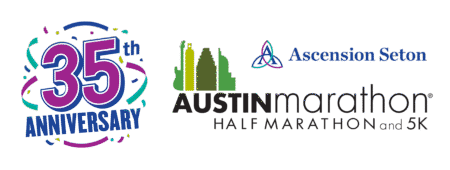Increase Your Mileage with this Helpful Advice
You’ve set a bigger goal, now it’s time to increase your mileage
It’s been said that running is addictive. First-timers will feel it. Veterans know to expect it. Naturally, we want to go further and further, push the boundaries. Testing ourselves is one way to build our self-esteem and learn about mental fortitude. Setting a bigger goal can be overwhelming when you look at the goal by itself. But we’re here to help every step of the way! Follow our guide below for the best way to increase your mileage. It’s the best way to grow as a runner, reduce the chance of injury, and work towards your big goal!
REST – (1-2 times per week)
 If your training plan calls for a rest day, TAKE THE REST DAY. This allows your body the chance to recover from the previous run or workout. If you get the itch to do something, make it active recovery. Foam roll throughout the day. Set aside time for deep stretching. Take an online yoga class. Those three options will speed up the recovery process and get you ready to run your best the next day.
If your training plan calls for a rest day, TAKE THE REST DAY. This allows your body the chance to recover from the previous run or workout. If you get the itch to do something, make it active recovery. Foam roll throughout the day. Set aside time for deep stretching. Take an online yoga class. Those three options will speed up the recovery process and get you ready to run your best the next day.
Build your running stamina – (2-3 times per week)
As you increase your mileage, you learn to get comfortable with being uncomfortable. Summer running in Texas doesn’t mean long distances (>13.1 miles). This is your time to work on your speed and form. Incorporate track workouts and work on increasing speed while running shorter distances. These shorter, higher intensity workouts will work your muscles differently. They will also better your body’s ability to consume oxygen.
Increase body strength – (2-3 times per week)
You’ll need to prepare your body for completing your big goal, whether that’s 13.1 or 26.2 miles. Break up running workouts with weight workouts. You don’t need to become chiseled or gain muscle mass. Focus on lighter weights with higher repetitions. You want to push the body, burn fat, and build lean muscle. Working muscles differently than when you’re running is critical. It helps prevent the overuse of the same muscles.
Set smaller goals – (1 time a week)
On a weekend morning, when it’s coolest, push yourself to run further than you did last weekend. When preparing to increase your mileage, you need to slowly teach your body that it’s capable of completing longer distances. You’ll eventually see that last week’s distance that was difficult is now easier. Over time, what was once thought impossible will become your warm-up. Slowly but surely increasing your mileage during the summer will put you in a prime position to really lock in your fall/winter half marathon or marathon training. This is when the weather gets cooler and you start feeling even better on your morning runs! Not a morning person? These 6 tips will help you get out of bed when the alarm goes off!
Do the work – (EVERY DAY)
This is self-explanatory! Whether it’s a rest day or your longest run ever, you have to do the work. You don’t need to set records or PR every time, but you do need to be consistent. That’s how you’ll build your running stamina and teach your body to run further and further. Pro tip: if there’s a day where you just can’t squeeze in a run or workout (because life happens), don’t stress. Don’t try to make it up the next day. Squeeze in a foam roll or stretch session if you can and keep moving forward with your plan!
There are many other factors that can impact how you increase your mileage: diet, hydration, nutrition, cross-training, injuries, etc. Those items can be built-in or dealt with as you progress. Just remember, you don’t just wake up and run these longer distances. This will take time, persistence, consistency. Do the work, set smaller goals, rest when you’re supposed to and you will achieve whatever goals are in front of you! Is there a tip or a trick you’ve used to increase your mileage? Let us know in the Austin Marathon Facebook Group or on Twitter!

 Combine anaerobic and aerobic during your next workout and take your fitness to the next level. This type of workout is different from strength circuit training and requires less time. Strength circuit training is completing a number of different exercises one after the other in quick succession. These types of workouts are good for general health and muscle strength. However, most distance runners aren’t looking to gain muscle mass. They want to gain strength, make running longer distances easier, and improve race performance.
Combine anaerobic and aerobic during your next workout and take your fitness to the next level. This type of workout is different from strength circuit training and requires less time. Strength circuit training is completing a number of different exercises one after the other in quick succession. These types of workouts are good for general health and muscle strength. However, most distance runners aren’t looking to gain muscle mass. They want to gain strength, make running longer distances easier, and improve race performance.  The
The 


